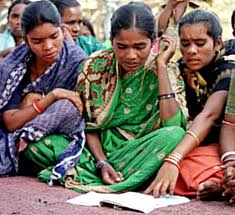Overview of Education in India
Education in India is provided by the public sector as well as the private sector, with control and funding coming from three levels: central, state, and local. It falls under the control of both the Union Government and the states, with some responsibilities lying with the Union and the states having autonomy for others.
Apex body for curriculum related matters: The National Council of Educational Research and Training (NCERT)
Main Structure (10+2+3 pattern)
- 10 years in Primary & Secondary: Grade 1 – 10 (age 6 – 15); 5 years in Primary (Grade 1 -5 ), and 5 years in Secondary (Grade 6 – 10)
- 2 years in Higher Secondary: Grade 11 – 12 (age 17 – 18)
- 3 years in College education
Students learn a common curriculum until Grade 10; they can choose specialization
subjects in Higher Secondary.
Three Major Streams in India
- The Central Board of Secondary Education (CBSE)
- The Indian Certificate of Secondary Education (ICSE)
- State Boards
Besides the above streams, there are some Exclusive Schools that follow foreign curricula such as the Montessori method.



